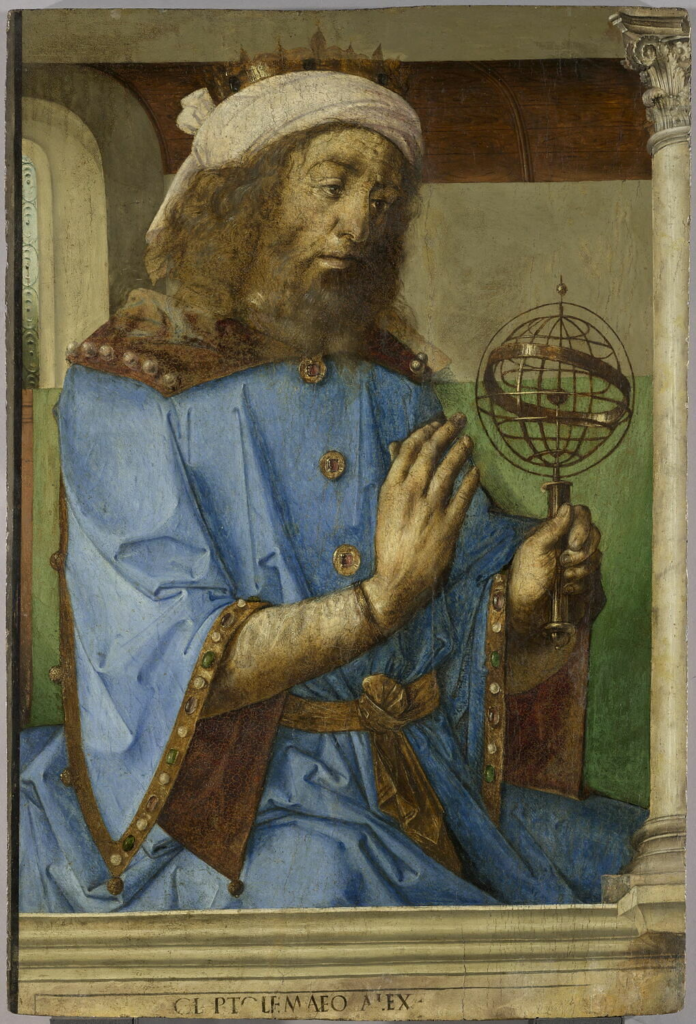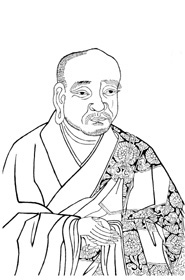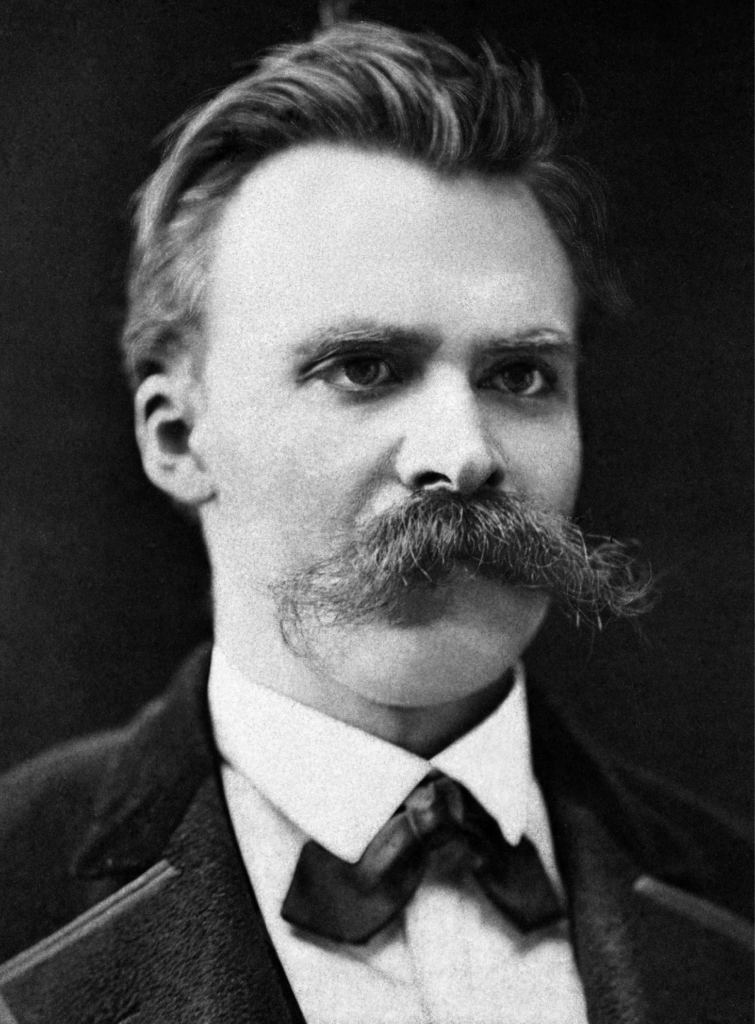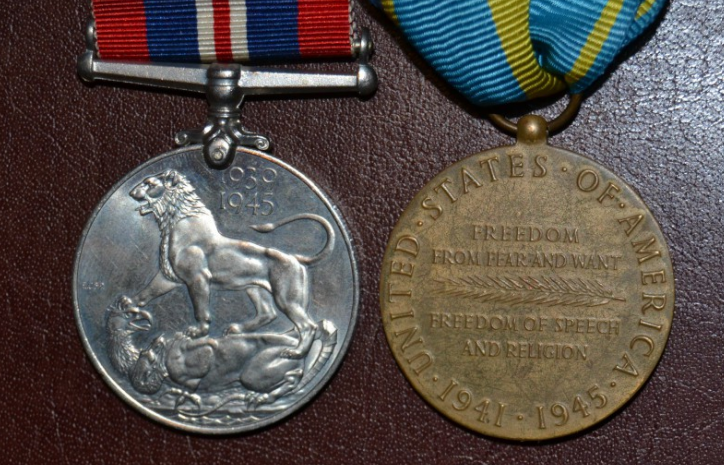
First published on February 23, 2022, by one of the foremost revisionist intellectuals today, Miles Mathis

The Work of Miles Mathis – Library of Rickandria
Additional information, images, videos & links from LOR on May 11, 2024.
I learned something new about the Buddha while compiling my recent quiz, and we will get to that in a moment.
But first I want to file a report on the Sun.
Many readers are asking for an update.
Things continue to ebb and flow, as usual, but generally we are in a steep incline regarding both sunspots and flux.
Flux has been up to around 130 as a daily high, which is about twice what it was at the depth of minimum not so long ago.
It will double again in the next couple of years.
But for now, we are anticipating the upcoming conjunction of Jupiter with Neptune in April, which I have predicted will give us our next big spike.
I successfully predicted the spike of November/December 2020 [see graph p. 9], which coincided with the Jupiter-Saturn conjunction.
That was the first successful prediction in the history of the world concerning Solar Cycles, so it should have hit the front pages worldwide.
Dramatic Changes in Our Sun – Library of Rickandria
Instead, they buried me once again.
Another successful prediction in the next few months will be another knife to the heart of the mainstream, so keep your eyes peeled.
I have predicted we will hit 120 in sunspot counts then (monthly average), which is more than double what the mainstream coalition of experts initially predicted.
My graph runs more than double theirs in this early climb, and we have been hitting my marks perfectly so far for more than a year.
So much so they have adjusted their predictions up for the entire cycle.
They are also suppressing sunspot counts to hide my success, either ignoring obvious spots or counting them as less than they are.
The Air Force was called in to oversee this fudge, taking over reporting that had previously gone to NASA or NOAA.
Air Force 2025: Final Report – Library of Rickandria
You can follow along here.
One thing you may have noticed is that your fingernails are starting to grow faster than two years ago.
That is due to rising charge.
Our bodies have been torpid for four years, and that is just one easy sign of it.
I now think that many of our health problems have been due to endocrine system disfunction, due to low charge.
Apparently, in Solar Minimum the endocrine system may go a bit haywire, with thyroid function swinging from hypo to hyper for no other known reason, for example, mystifying doctors.
That is probably due to signaling malfunction from low charge levels.
The endocrine system is all about signaling, with hormones, but the system itself has to be signaled, and it is signaled with photons.
If charge levels drop too low, the system can’t properly read the signals.
The body is a crisscrossing of systems and signals, and when charge levels go too low, you likely get cross-signaling and other noise.
In other words, the signals of each system can’t rise above background noise.
Anyway, the upshot is that with rising charge you should feel better and better, though it will take a while for you to recharge.
We have all been in a deep charge hole for more than four years, in the worst minimum since 1812.
But we will continue to climb for several years now, peaking around Jan. 2027.
We won’t fall back to current levels until 2031.
Now for the Buddha.
As I pointed out in the previous paper, as it turns out the life of Buddha just happens to coincide with the conquering of the Indus Valley (northern India) by the Achaemenids (Persians) in about 500BC.
When joined to one other fact, that should throw up huge red flags, and it did for me.
That is that Buddha’s real (family) name was Gautama.
Why is any of that a red flag?
Well, see my paper on the Phoenicians, where I show the Persians were just Phoenicians by another name.
Where did ALL the Phoenicians Go? – Library of Rickandria
The Phoenicians were traders traveling long distances both east and west.
When they stayed at home, they called themselves Phoenicians or Jews.
When they infiltrated cultures to the east, they called themselves Persians or any number of other names.
When they infiltrated cultures to the west, we have seen them call themselves Greeks or Minoans or Carthaginians or Romans or a dozen other big names.
Gautama is the same sort of clue, since it also comes up in the west.
Even in India it is often spelled Gotama, which is an even bigger clue.
They have misspelled it Gautama to keep us from seeing what I finally saw.
Think Saxe-Coburg-Gotha, and Visigoth.
If you think I am grasping, see the Wikipedia page for the English word “god”, telling us where that word comes from.
There you will see that it admitted that god comes from gudan which comes from gutam in Proto-Indo-European (PIE).
This comes from the root gau in Sanskrit, meaning “to invoke”.
Magickal Evocation & Invocation – Library of Rickandria
Sanskrit links the west to the east.
The Matrix & the Sanskrit Texts – Library of Rickandria
Next, we find this treat:
A significant number of scholars have connected this root with the names of three related Germanic tribes:
These names may be derived from an eponymous chieftain Gaut, who was subsequently deified.
The Goths were also called the Gautani.
That’s sort of interesting, no?
But it gets even better.
Gautr was one of the other names given to the Norse god Odin in the Eddas.
Why is Odin the New God of Choice for White Supremacists? – Library of Rickandria
And we have previously seen that Odin actually came from Turkey—the east.
Like the Phoenicians, he came from the east and only settled in the Viking/Gothic lands later.
Odin/Woden then links us the Hebrew yodh, a letter in that alphabet as well as the Phoenician, Aramaic, and Arabic alphabets.
It also indicates the number ten and the element Iodine. †
In that previous paper, I showed that the Phoenicians not only seeded the Persians, but they also seeded the Vikings, who—like the Phoenicians, loved to wear purple.
Guess who else liked/likes purple?
Not only the Buddha (“his body was of purple-gold”), but also the followers of Tao and Shinto.
The highest rank in Japan have always worn purple.
Since Japan was allegedly cut off from the West until the 1500s, how did they just happen to choose the same color scheme as:
- Phoenicia
- Rome
- Buddha
and the Vikings?
This name Gautama happens to link the Buddha to contemporary people in Norway named Gaute, such as TV host Gaute Grav.

It also links us to Gotye, the “Australian” guy who was famous a few years ago for that song and video “Someone that I Used to Know”.

His name comes from his French name Gauthier, which takes us to the same place.
Wouter “Gotye” de Backer comes from noble Dutch lines going back centuries.
He may be related to Walter Becker of Steely Dan, who has the same name.

Becker’s mother is scrubbed in all places, which is very strange.
Also see Theophile Gauthier, who I have hit before.

He was from a noble family, see the Marquis of Chiffreville, linked to the Stuarts through Sophia Stuart, d. 1751.
They also link us to the Montagus through the de Parcs.
But of course, it is the Saxe-Coburg-Gothas that give up the farm here, because they came from the ancient trading center Gotha, going back to the 700s and earlier.
It was originally Gotaha, allegedly meaning “good waters” but not meaning that at all, as you now see.
It was on two major trade routes of the Goths, who were neo-Phoenicians.
In fact, it is admitted the Goths were just Vikings by another name, since they were the progenitors of the modern Swedes, inhabiting Gotaland since antiquity.
The Swedes called them the Gotomal.
Again, very close to Gautama.
Ptolemy called them the Goutai in the second century.

Procopius calls them the Gautoi.
In the sagas they are the Gautar.
Their city was of course Goteborg, or Gothenburg.
This is also where the name Gotham City comes from.
I bet you didn’t think we could link the Buddha to Batman, but we can.
And we still aren’t finished.
As it turns out, we can link the Phoenicians to these Goths and Vikings in another way:
their alphabets.
It never occurred to me until now, but the Futhark runes are very close to Phoenician incised letters.
This match has apparently been buried for centuries, but it is very obvious once it is pointed out.
The Futhark runes may even have been fudged on purpose to make it a bit less obvious, since as I studied some of the examples of “ancient” runes online, they looked fake as usual.
See this for instance:

That is now at the top of the Wikipedia page for runes, sold as an actual manuscript from around 150AD.
But it is an obvious modern fake, since it looks way too good for its age.
It looks sort of the like the maps I made for my LOTR sequel, which I then antiqued.
I have suggested before that all real written materials from that time and place have been stored, to keep us from making these connections, and this strongly reinforces that guess.
So, what does this all have to do with the Buddha?
Well, if we insert all this “new” information into our heads and then go back to the bio of the Buddha, we start seeing some very big cracks.
To make this as easy as possible, let us just run down his Wiki page, looking for things that now jump out at us.
He came from an aristocratic family of merchants.
He is known as “Jina”—conqueror.
He is known as “Bull among men”.
That is a huge clue and a very obvious pointer at the Phoenicians, who worshipped El, the Bull.
Then we find the 32 marks of the great man.
That is another obvious pointer to the people of the Phoenix, who love the numbers 32 and 33 to this day.
We also find numerological links with the aces and eights, which both the Phoenicians and the Buddhists key on.
See the number 108:
There are 108 beads on a mala; in yoga, the 12 postures of the sun salutations are often completed in rounds of nine; and pranayamic breathing is often practiced in cycles of 108.
The False Teachings of Modern Yoga – Library of Rickandria
Several eastern spiritual paths, including:
- Buddhism
- Jainism
- Hinduism
hold the number 108 sacred, and yogic and dharmic practices connect to it.
Gautama was not familiar with the religious teachings of his time as a boy, which seems extremely odd.
But if he was a Persian/Phoenician, it would be explained in the sense that he was not familiar with the Hindu religious teachings of the time.
He is said to have lived a very spoiled childhood, living in a palace—precisely what the son of a rich Phoenician trader would say.
Gautama became a mendicant, which is another pointer to the west.
Before 500BC, in the Vedic period Hinduism had little tradition of mendicants, since most people were already poor, living barely above subsistence and having little to share with beggars.
Like the rest of this, mendicancy points to the Phoenicians and their wealthier trading centers, which could support beggars.
Also remember that only among the wealthy would mendicancy be seen as penance or anything special.
Only they had anything to renounce.
The sons of the wealthy could draw attention to themselves and their philosophies by appearing to renounce their previous lives of privilege, but for most people that would have been an empty gesture.
So, this Buddha story is pointing us at the peripatetics of Greece like Socrates, as well as to the later Jesus.
The Truth About “Jesus Christ” – Library of Rickandria
It doesn’t fit the period, which is no surprise seeing that they admit the bios of the Buddha come from around the time of Christ, 500 years after the alleged time of the Buddha.
He was also called Lion, as in the rampant lion of the Stuarts:

Nothing is known of him, and he could be fictional.
He wrote nothing and his bio was made up much, much later.
Strangely, there is much more evidence of his teachers and students than there is of him, which makes no sense.
He is said to come from the Shakya clan, who some have claimed were Scythians from Central Asia.
They could just have easily been Persians from the same general area, linking us to the invasion of that time and place.
The Shakya were indeed in Northern India, in the Indus Valley, all the way to Nepal.
Communism in Nepal – Library of Rickandria
Since the Shakya were outsiders, the link to the Persian conquest of that time is even easier.
We are told they had little respect for the Brahmins, indicating they were lower class, but there is another, better assumption:
they were not impressed by the Brahmins for the reason that they thought themselves better than the Brahmins.
This was the case with the English much later, of course.
This would explain why the Buddha acted as a schismatic in Indian culture:
he was meant to.
He was either inserted and promoted for that purpose, or he was created in oral tradition for that purpose.
Also looking like a Jewish joke is the claim the Buddha died of pig-bel disease.
Clostridial necrotizing enteritis – Wikipedia
It is caused by eating contaminated and undercooked pork.
Sound familiar?
Do the Jews have a famous aversion to that?
Yes.
So, the most kosher (perfect) man in India ever dies a non-kosher death.
Hilarious.
Sort of conflicts with other parts of the story, where the Buddha didn’t even need to eat or breathe, he just did so to fit in.
Another clue is the “black polished ware” used by the northern Indian Kosala culture of the time, of which the Shakyas were a part.
Northern Black Polished Ware – Wikipedia
This reminds us of the “black glazed ware” of the late Phoenicians and early Greeks, giving us the link to the west again.
I suggest this black polished ware of the Indus Valley came from trade with the west, brought by the Phoenician merchants.
The Indus valley would be the easiest route in their movement east, explaining why the black glaze came there before moving down to more southern parts of India.
Next, we find this misdirection:
In particular, the ideas of the Buddha may have partly consisted of a rejection of the “absolutist” or “perfectionist” ideas contained in these Achaemenid religions.
Do you see the problem there?
The Buddha couldn’t have been rejecting absolutist or perfectionist ideas, since Buddhism is the ultimate example of that itself.
Both textually and historically, the Buddha did precisely that:
he introduced an insane view of Earthly perfection into Indian culture, with the apparent goal of exploding that culture.
My suggesting that is not novel, since his Hindu critics said exactly that at the time.
Buddhism was strongly resisted in the beginning for that very reason, and in some places it still is.
It is this perfectionist theme that poisons Eastern cultures to this day, and it came through Buddhism (among other places).
Think of the young people of China and Japan today who are thrown into convulsions by the least problem, in therapy because they had a bad hair day or couldn’t find their keys.
The Jewish Takeover of China – Library of Rickandria
This has been in the news for decades, and continues to get worse, but it is something that has been endemic to Eastern cultures for a long time.
On the one hand it allows them to do well in school and business, since they have a lot of discipline and attention to detail, but on the other hand it can spawn a whole raft of neuroses.
As you see, this poison was inserted into Eastern cultures 2500 years ago on purpose.
And that may be the least of the damage it has done.
This also ties us back to my previous papers on the Buddha, where I went briefly through his famous bio by Ashvaghosha, pointing out that Buddhism actually tastes weirdly Jewish.

[Aśvaghoṣa, also transliterated Ashvaghosha (Sanskrit: [ˌɐɕʋɐˈɡʱoːʂɐ], अश्वघोष; lit. “Having a Horse-Voice”; Tibetan: སློབ་དཔོན་དཔའ་བོ།, Wylie: slob dpon dpa’ bo; Chinese: 馬鳴菩薩; pinyin: Mǎmíng púsà; lit. ‘Bodhisattva with a Horse-Voice’) (c. 80 – c. 150 CE), was a Buddhist philosopher, dramatist, poet, musician, and orator from India. He was born in Saketa, today known as Ayodhya.]
Buddhism the stronger poison by Miles Mathis (mileswmathis.com)
It has that Phoenician/Jewish darkness to it, that hatred of earthly existence.
A pronounced unnaturalism that doesn’t fit with the old Hindu world in most ways.
Nietzsche famously noted this, though I think he misunderstood the real connection.

Or possibly he knew the connection and was misdirecting away from it.
I had never considered that possibility until now.
In that paper, I called Buddhism “the stronger poison”, meaning it was even more unnatural than Christianity as promoted by:
- Paul
- Augustine
- the Protestants
Christian Program & Purpose – Library of Rickandria
But we have since unwound that mystery as well, since Jesus had initially tried to dispel some of that ancient Phoenician/Canaanite darkness, only to be trumped by Luther the crypto-Phoenician later.
For another link, see the famous “Grand Inquisitor” section of The Brothers Karamazov, which I mentioned in yesterday’s paper.
It addresses this question.
Something else I discovered in the last few days while compiling that quiz that ties in here is this page from Wikipedia on Trebizond, or the Trapezuntine Empire.
Empire of Trebizond – Wikipedia
When the Byzantine Empire began collapsing in about 1200AD after being sacked by the Christian soldiers of the Fourth Crusade, it split into three parts, the main part being Trebizond.
Philip III the Bold & the Crusades – Library of Rickandria
It controlled much of the Black Sea, north and south, with its capital at Chaldia.
Even that name is a clue, since it links us back to the much earlier Chaldean Empire (600BC), which preceded their cousin-empire, the Achaemenids/Persians (500BC).
Neo-Babylonian Empire – Wikipedia
All the same people as the Phoenicians, as we have already established.
The pre-Hebrew language Aramaic is also known as Chaldean, which confirms that link explicitly.
Anyway, 1700 years later it was still the same people hiding behind different names.
We can tell because Trebizond was ruled by Alexios and David Komnenos, grandsons of the deposed Emperor.
If you still have any doubts, take a look at the flag of Trebizond:

As usual, the fake historians try to tell us that is a two-headed eagle, but we know better.
Eagles never had two heads, but Phoenixes did.
That is a Phoenix, not an eagle.
If the Byzantines were Phoenicians in 1200, they were probably Phoenicians back to the beginning, when Byzantium spun out of the collapsing Roman Empire.
Rome seeded Byzantium, since Byzantium had started out as Rome-East, initially ruled by co-Emperors with Rome.
Therefore, if Byzantium was Phoenician, that is more indication Rome was as well.
So, we have now hit that question from both ends.
I previously worked up to it from the founding of Rome by Aeneas, and now I have worked back to it from the collapse of Byzantium.
If you still don’t believe that is a Phoenix, I will prove it to you.
One of my readers, who had been telling me I deserved a medal for my work, finally sent me a medal, sort of as a joke, I think.
It was just an old war medal he found on Ebay for a song, but I liked the idea.
So, he started sending me more that he found, especially ones that had some significance.
Here are two of them:

These are the reverse sides of the medals.
Notice what it says on the second one, which is a US medal from the end of WWII.
More WWII Fakes – Library of Rickandria
“Freedom from fear and want.
Freedom of Speech and Freedom of Religion.”
So much for that.
But for this paper the first medal is even more interesting, since we see a lion defeating a two-headed phoenix.
That is a British medal, with King George VI on the obverse, so the lion stands for England, specifically the royal house.

So, the Phoenix must stand for Germany.
Just one problem:
Germany’s emblem wasn’t expressly the Phoenix.
It was this:

Which they tell us is a two-headed eagle.
But as you see, the English have admitted with their own war medal that that bird is not an eagle.
It is a phoenix.
Some have tried to tell me that is a gryphon on the medal, due to the lack of wings and the lizard tail, but gryphons also have wings, and they do not have a lizard tail.
They have a lion’s tail.
Plus, the Nazis did not use a gryphon for their emblem.
The BEER HALL PUTSCH was Faked! – Library of Rickandria
A search online tells us:
The reverse shows a lion standing wanton on the body of a double-headed dragon.
The dragon’s heads are those of an eagle and a dragon, to signify the principal occidental and oriental enemies during the Second World War.
But that sounds like more misdirection.
Why would they use a dragon to signify the Axis powers, when even Japan didn’t use a dragon as an emblem in that war?
The dragon makes you think of China, not Japan.
And even if the dragon did symbolize Japan, that also wouldn’t make sense, because then the medal would mostly point at Japan, with only an eagle’s head to signify Germany.
The US did the most defeating of Japan, with our bombing raids, so you would expect a British medal to mostly point at Germany.
As I see it, that is a wingless Phoenix, standing for Germany, and it is wingless to indicate it has “had its wings clipped”, you see.
And this allows us to finally see what the Great Sphinx is in Egypt.
It isn’t a sphinx, or a gryphon, either.
It is yet another variation of the Phoenix.
The sphinx was a Greek concept and came later.
It had a woman’s head.
The Sphinx in Egypt has a man’s head, destroying the entire myth of the Greek sphinx, which had to do with the dark side of the female.
I suggest the Egyptian sphinx is a Phoenix with the head of the Pharaoh.
You will tell me the Egyptian Sphinx doesn’t have wings, and that is true:
it doesn’t NOW.
But in general the sphinx did have the wings of an eagle, just like the Phoenix.
And it is quite possible the Great Sphinx did have wings in the past.
They would have been the first things lost to erosion, of course, standing up off the back of the sculpture.
This means the Greek sphinx was also a variation of the Phoenix:
it was just a Phoenix with the head of a woman.
You will say the Phoenix didn’t fall in WWII, so the WWII medal makes no sense either way.
The British were just as much the people of the Phoenix as the Germans, both before and after the war.
JEWISH BANKSTERS’ WAR ON AMERICA & THE WORLD – Library of Rickandria
Which is true, but that just means the medal itself is another layer of misdirection:
1)
Making you think the war was about defeating the Nazis or Prussians or Weimar Republic again, when it had nothing to do with that.
2)
Making you think the Germans were the people of the Eagle (Phoenix) while the British were not.
When in fact the war was mainly about raping the treasuries of all the countries of the world one more time in even greater fashion, while suppressing the native populations and smothering them with new:
- Intel agencies
- banking structures
- international front organizations
and new corrupt political parties.
But back to Trebizond.
On this same Wiki page, the fake historians try to misdirect by claiming these Komnenes were “princes of Lazia”, coming from the native tribes of Colchis, but this is absurd.
On other pages we are told the Komnenes came from Armenia.
But while they also ruled those places just to the north of Phoenicia like Colchis and Armenia, they weren’t native Armenians or Colchians.
Since they were Emperors of Byzantium, we can be sure they were old-stock ruling class, which means they were Phoenicians, not native tribal leaders.
These Komnenes continued to rule the Black Sea for another 250 years, until they were replaced by their Muslim cousins the Ottomans in the mid-1400s.
You will say “cousins”?
That is a whole other paper, but yes.
Just look up the first Ottoman emperor, Osman.

Nothing is known of him, indicating the usual Phoenician/Jewish mop up on history.
They don’t want you to know where these people came from or who they really were.
However, in the context of this paper, it may interest you to know that many historians believe Osman’s name was changed by early writers to hide his heritage.
They tell us his name was originally Atman.
No, really.
If you don’t know, Atman is a central word of Hinduism, meaning “essence, breath, self, or soul”.
So, we are deep in already.
It is also used in German and Dutch to this day:
atmen means “to breathe” in German.
All are connected to the Hebrew word ated or hated meaning the same thing.
But they couldn’t have this fake Turkish Empire known as the Atman Empire, could they?
That would have been a little too revelatory.
So, I will make it easy for you:
the Ottoman Empire was a Phoenician front from the beginning and was never really Muslim.
It was just hiding behind the Muslim people, sort of like the Phoenicians are hiding behind Christian nations now—such as in the US.
Exposing Christianity – Library of Rickandria
The US is still predominantly Christian, so you could call our Empire a Christian Empire.
The Real Tetragrammaton: Further Exposing Christianity – Library of Rickandria
But, as with the Ottomans, our leaders aren’t representative of the people.
Our leaders are not Christian, as has become glaringly obvious in the past decade.
Breaking Free of Christianity – Library of Rickandria
In the same way, the Ottoman leaders were not really Muslim.
Just look at their pictures.
We have seen many of them had red or blond beards.
That should surprise you, since Muslims don’t normally have red or blond beards.
And this was not that long ago:
1400AD is pretty recent, as a matter of how people look.
600 years is not enough time for evolution to work on beards.
It is also not enough time for records to evaporate.
We should not see the beginning of the Ottoman Empire referred to as “a black hole”.
In India they have documentation going back 6000 years, so the beginning of the Ottoman Empire 600 years ago should not be lost in the mists of time.
Which leads us back to the Buddha.
Most of you who care to know, know that I am not an atheist or agnostic, that I do yoga, and that I believe in reincarnation.
But I didn’t get that belief from Buddhism or Hinduism.
It came to me directly.
Anyway, you would think I might have a soft spot for Eastern religions due to that, but I don’t.
I like yoga for other reasons and push all the religious clutter away with disgust.
I spent part of my youth disconnecting from the darker aspects of Christianity and have never had any desire to replace them with other darkness.
Why It Can Be Difficult to Deprogram from Christian Indoctrination – Library of Rickandria
This should not be read as an attack on anyone.
We all do what we have to do, and anything that helps you get through the day can be justified on those grounds alone.
You can worship John Wayne or Grover for all I care, as long as it makes you a better person. *
And as you also know, I have gone out of my way to defend Christianity as a whole against present attacks, since it certainly beats the current alternative:
Mammon in its ugliest form.
Murderers, Thieves & Liars: Christianity has Nothing of its Own – Library of Rickandria
That said, for myself, the more I learn about Buddhism the less I like it.
It seems to me an ersatz religion, already strange and unnatural from the beginning but even more strange and unnatural in its form imported to the West.
And I don’t think that is any accident.
I now think it was pushed in India and the East as a cultural poison from the beginning, and it was imported to the West for the same reason.
I have never found it the least bit fascinating.
Remember, although Buddhism has been promoted for 2500 years by the masters of promotion, it has never fared that well against Hinduism.
Hinduism remains far more popular in India, though the Buddhists have had somewhat more luck in China and Japan and Indonesia.
This should tell you something about the actual appeal of Buddhism.
From an alien perspective, India would have seemed ripe for a new religion at the time, and to be honest, it still would seem to be.
To this day, Hinduism is mainly what it was 5000 years ago:
a semi-pagan pantheon-of-gods, idol-worshipping religion of the Greek or Roman sort, but with admittedly more color and complexity and antiquity.
Led by the Jews, the Europeans traded their own pagan pantheon for a more cerebral monotheism 1500 years ago, so why did neither Buddhism nor anything else displace Hinduism in India?
It is a big question, admittedly, far too big for this little paper, but my point here is that Buddhism didn’t ever fill what would seem to be a conspicuous void in India.
Why not?
The Phoenicians are probably still asking themselves that question.
I suspect Indians will answer me that they never saw or felt the void.
Their religion, being homegrown, fit them from the beginning, so why trade it in?
Another part of the answer is that the Phoenicians were always looking more West than East.
Being colder and less densely populated, Europe was far easier to conquer and infiltrate and dominate.
There was no standing culture of the Indian sort, already ancient and hoary.
** So, the Phoenician gaze was naturally focused north and west.
As you see, this new reading of the Buddha pierces a whole cloud of mysteries all at once, fitting him into our greater narrative.
Of course, this paper only stands as a suggestion, and begs much future research, which my students or I may someday get to.
In a related tack-on, I went to IMDB for a list of the best movies of the 1950s.

One highly recommended was The Night of the Hunter, starring Robert Mitchum.
It had a metascore of 99, so I thought I was in for a treat.
Nope.
I didn’t last five minutes.
It was a very obvious and ham-handed blackwash of Christianity from the second scene, by a crypto-Jewish director (Charles Laughton, mother Conlon=Cohen‡) and writers.

This proves once again that although I am not a Christian, I will defend it against spin of this sort.
I don’t like mindgames, and religious mindgames are the worst.
* While in Taos, I spent some time at the Hanuman Temple with a girlfriend who was active there, and I have to say I am not convinced worshipping or chanting to a ceramic monkey really helped any of the white people I knew.
Just the reverse, in fact.
I don’t have much truck with Judaism, but one thing they did right, I think, is outlaw idolatry back to the time of Moses.
Chanting to a ceramic figure is strictly idolatry and should be beneath the dignity of anyone now.
It would make more sense to pray to the Sun, or to trees, or to the Earth and the crop cycles, since all those things actually give you life.
Monkeys do not give anyone life in New Mexico.
I am not aware that they give anyone life in India, either.
On a similar note, I always found it disturbing to find a Christian church on the Pueblo.
I have to think that if I were a Native, I would not be happy about it. I would hate Christian churches, and rightly so.
As Hinduism fits the Indians, the Native ceremonies fit the Natives.
Those traditions helped them, while the white people and their traditions did not.
So, when I have stated before that I am on the side of the Natives, I mean that in the fullest sense.
I don’t mean I am for them being assimilated and Christianized.
I am for them being who they were and are and being left alone of our pernicious influence.
Of course, if they want to assimilate or be Christians, I support that as well, but I have to say that I support even more their right not to.
Probably because I myself am not really assimilated to this rotten culture and wish I could dis-assimilate from it even further.
But I know I am not Native and cannot pretend to be.
I am also not Amish and cannot pretend to be.
I can only be a strange pilgrim in a personal culture and religion of one.
** Or, if there was, it has been obliterated down to a few standing stones, and the records gathered and stored in the Vatican archives or somewhere.
The Phoenicians clearly don’t want us to know what was in Europe before they took over.
We are supposed to believe it was just a few dirty peasants worshipping trees and stones and slinging mud, like in a Monty Python movie.
† I dedicated one of my science books to Woden, thinking I was being clever, before I knew what I know now.
I thought I was nodding to my northern European roots, or speaking to my Muses by another name, but now I am not so sure.
It begins to look like I may have been duped again.
If the original Woden was NOT a Phoenician, being only used by them in the usual ways, I wish he would let me know somehow.
‡ The Conlons in the peerage later married the Bouveries, confirming that.
Bouverie=Bouvier.
They are also related to the:
- Gorings
- Forbes
- Boothes
Wikipedia expects you to believe they hail from Conaill, which is doubtful, but in any case, Ireland was settled from Spain by the followers of Milo, so the early rulers were Phoenician no matter how you look at it.
Laughton went to a Jesuit school.
Vatican Jesuits – Library of Rickandria
He served in WWI, but only with the Huntingdonshire bicycle brigade.
5th (Huntingdonshire) Battalion, Northamptonshire Regiment – Wikipedia
You have to laugh.
He was a very good actor, but Night of the Hunter is garbage.

Leave a Reply